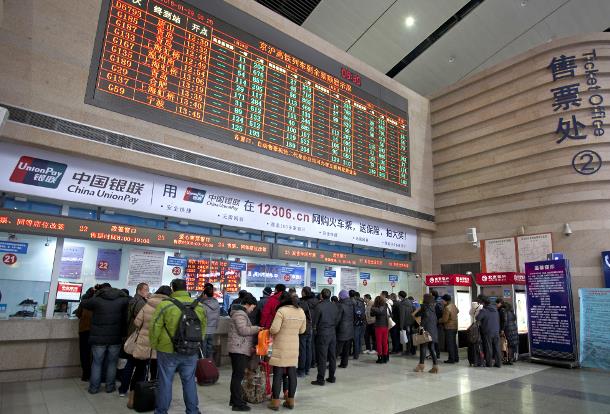ChinaTravelNews - Is advertising technology on the verge on touching a point where the intent of a traveller can be accurately assessed in order to offer a marketing message with laser-sharp precision?
There is no precise answer to this conundrum, and it seems to be a work in progress as of now. The ad tech industry is making steady progress in today’s shopping environment. But the dynamic pace with which a traveller can switch between devices for several channels does make the situation a tricky one.
Cross-device advertising is complicated, admits Daniele Beccari, Head of Travel Products at Criteo, a performance advertising tech specialist. He does acknowledge several challenges the industry is facing at this juncture, be it for evaluating user browsing behavior across devices or the issue of attribution. Typically advertisers see their budget going waste (owing to 20-30% degree of error in analysing behavior pattern of users based on implied match or feeble measurement of cross-device campaigns). “(Also), the biggest challenge the industry is facing today is to step up the conversion rate on mobile, considering the traffic that is being generated,” says Beccari.

Daniele Beccari, Head of Travel Products at Criteo
Here we explore a couple of key issues pertaining to improving upon efficacy of digital ads/ messaging:
• Identifying a user: How well a digital consumer is being identified? This question is as important as sending a relevant marketing message to a traveller depending upon the stage of the booking funnel.
The industry is trying to cut down on errors resulting from the method of tracking a user via implied match. As Beccari explains, this method of identification relies on the fact that a user with the same IP address ends up browsing from one device is a unique user. But this might not be right as two or more users might be using the same device from the same location with the same IP address.
But this holds weight if a user is using a unique login details.
So in case a traveller is logged in, there are ways to identify this user from one device to the other. The preferences and behavior can be assessed, say when a traveller is using a single sign-on platform – Facebook, Gmail etc. But this isn’t strong enough a method on its own, too, as every prospective traveller isn’t going to log in, moving from device to device. All of this becomes an increasingly challenging issue as users today can straddle between 4-5 devices for their shopping requirements.
At the moment the industry is looking at working out exact match solution in order to track and log in details of users better. The focus is on spotting identifiers to accurately identify users across devices, and blend the same with purchase intent algorithms to step up the conversion rate. This is where Criteo is diligently attempting to excel, and the team has already come up with a cross-device personalized marketing offering.
Beccari recommends that travel e-commerce entities need to log in data, develop reporting capabilities. Plus, all of this should be overlooked by data specialists to chart out a meaningful action, and gear up for a multi-channel, cross-device advertising strategy. Travel companies shouldn’t underestimate the power of accurate browsing data as this is going to lay the foundation for a personalised marketing message reaching out to the right person. “Data needs to associated with a traveller’s intent at the right moment,” says Beccari, who adds that the company is reaching around one billion Internet users monthly.
Criteo says the team, as per the results from the beta stage of its offering, has observed that 15-20% of transactions done on a device were a result of marketing campaigns initiated on a different device. Also, the company is banking on the quality of its data assets, which is paving way for assessing “the link between two devices” – so a shopper buying a pair of shoes from her tablet, and then opting for a last-minute deal from an airline via her smartphone.
• Relevant message: Another critical aspect where advertisers tend to focus on is relevancy in content/ messaging during various phases of the travellers’ trip.
It cracked properly, this can pay rich dividends.
For instance, an advertiser is looking at retargeting once the user has dropped out of an advertiser’s website. An advertiser might be displaying banner ads as part of its retargeting campaign on several search and meta-search engines. So with apt machine learning technique, an advertiser can improve upon the media mix, and cut down on digital ad wastage by cutting down on channels that aren’t paving for desired conversion rate, average order booking value and optimization cost of sales. Citing an example, Beccari says one travel brand ran a generic display branding campaign, and compared it with personalized ads based on machine learning algorithm offered by Criteo. “For the same number of impressions, the personalized ads showed 500% increment in bookings,” he says. Beccari recommends that travel brands need to overlook disparate pieces or solutions, and rather go for an integrated offering that helps in maximizing conversion rate across search and display.
As for the accuracy of Criteo’s machine learning technique, it’s interesting to assess to what extent it is helping in understanding a traveller’s immediate context and forecast the desired experience of the moment. The job of such algorithms is to find out the most relevant products to display for optimal click-through and conversion.
“It indeed is very difficult to explain the same, why the engine has taken a certain decision,” says Beccari, who adds that the team is working on analysis to offer advertisers’ insight into the recommendations that come from Criteo’s machine learning algorithm. The Criteo Engine analyzes more than 230 terabytes of data every day and handles 15 million requests per second.
Challenges in China
Beccari says there is no denying the fact that a market like China with as many as 600m Internet users demands a strong infrastructure to meet the requirements of the overall travel e-commerce sector.
He mentioned that there aren’t any issues as far the regulatory environment in China is concerned –providing notice in the ads users see with information about personalized ads, the data practices associated with ads served. and how to opt-out of targeted advertisements if they intend to etc.
Beccari did point out that one of the major challenges is to serve ads, especially considering the vast amount of formats that can be seen in the Chinese market. For instance, Baidu has numerous ad solutions on its display network featuring different ad formats such video ads, floating ads and dynamic display ads. And the situation can only get more complex, if the industry’s certain web browsers block specific cookies. This can surely impact the way international companies gathers information.
The market for Internet display advertising solutions is quite intriguing, marked by heavy competition.
Criteo asserts that is strongly placed in the battle for garnering ad impressions on advertising exchange platforms. The company says it works with almost all RTB networks, and this extensive inventory means Criteo shows personalized ads to 8 out of 10 Internet users in most key markets – even higher in some countries.
One aspect that ad tech companies need to track pertains to control exercised by Internet and technology companies at these entities can make amendments to their web browsers, mobile operating systems, exchanges etc. (Report by Ritesh Gupta)




